
Kortenhoef (NH): St. Antonius van Padua (A. Tepe, 1879-1880)
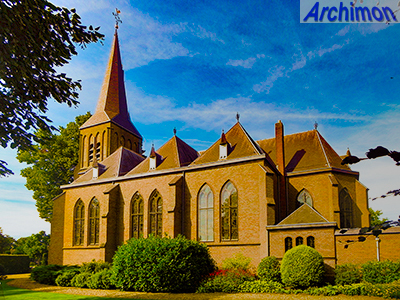 After the Reformation, when the village church became protestant, the
catholics of Kortenhoef attended hidden churches in neighbouring villages, a
situation which continued until 1810. That year a catholic post was founded with
a former carriage house transformed into a church. But the catholic community
was small and poor and almost lost its church to a creditor in 1815. Despite the
situation in 1855 the post was elevated to a parish. Shortly thereafter the parish experienced an increase in the number of
parishioners coming from the nearby and much more prosperous village 's-Graveland. Soon the church became
too small and at too far a distance for most of the parishioners.
After the Reformation, when the village church became protestant, the
catholics of Kortenhoef attended hidden churches in neighbouring villages, a
situation which continued until 1810. That year a catholic post was founded with
a former carriage house transformed into a church. But the catholic community
was small and poor and almost lost its church to a creditor in 1815. Despite the
situation in 1855 the post was elevated to a parish. Shortly thereafter the parish experienced an increase in the number of
parishioners coming from the nearby and much more prosperous village 's-Graveland. Soon the church became
too small and at too far a distance for most of the parishioners.
In 1877 a new priest was appointed who decided to build a new church closer
to 's-Graveland. In 1878 a plot of land was purchased while in March 1879
the archbishop of Utrecht granted permission to tender the construction of the
church and presbytery according to a design by the architect Alfred
Tepe. Work began in July that same year and in June 1880 the completed church
was consecrated.
While the nave is without ornamentation, the tower is adorned with niches and
traceries as well as a frieze halfway which resembles a fake balustrade, a
feature also present in some of Tepe's other churches from the period ca.
1877-1883. There have been plans to replace the church by a bigger one just before the
Second World War, which probably prevented it, and again around the year 1965.
This time the church was saved by the secularization. In 1976 the church became
a protected monument.
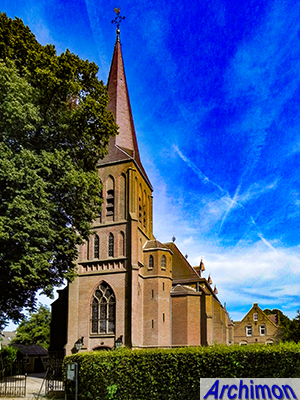
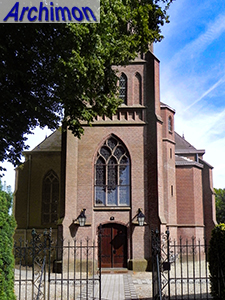
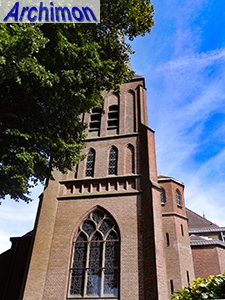
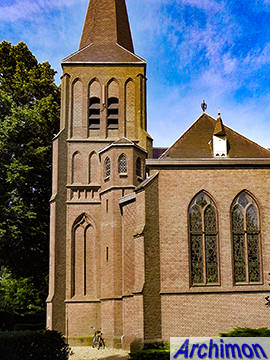
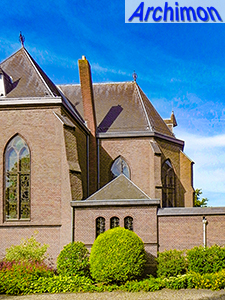
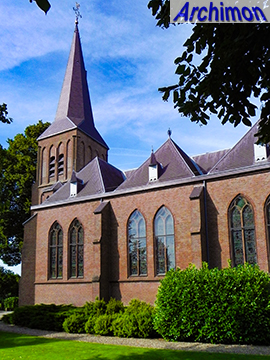
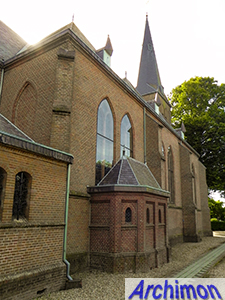
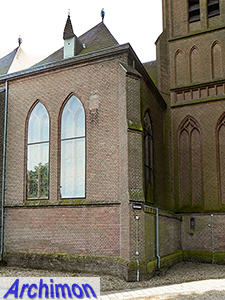
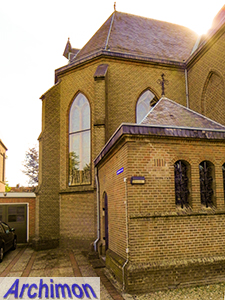
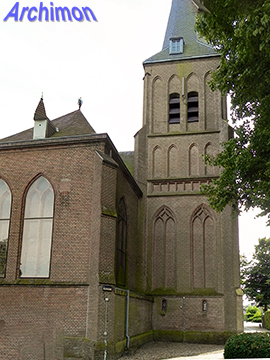
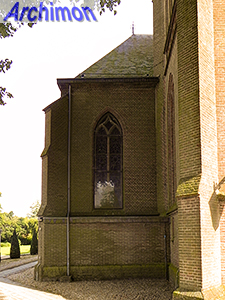
Back to Churches in the province of Noord-Holland
Back to Wijdemeren municipality